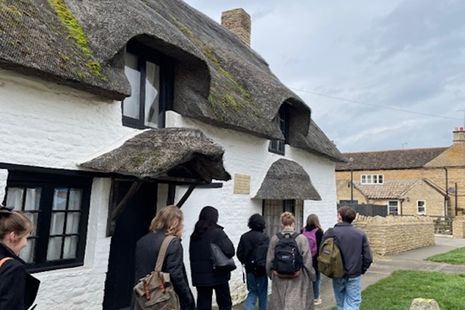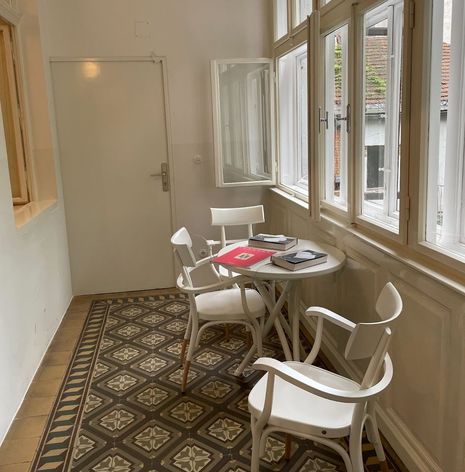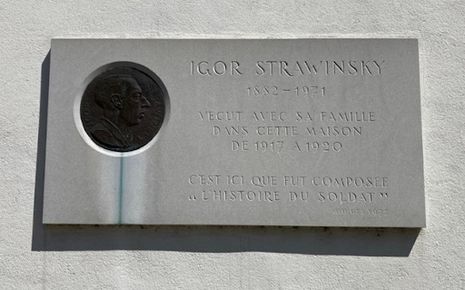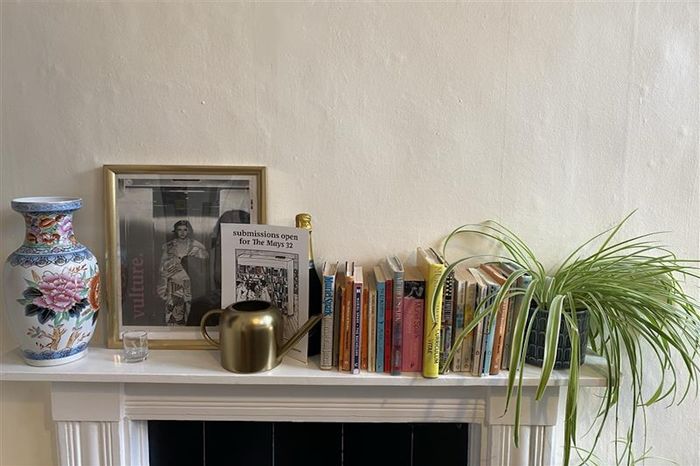Why do we visit artists’ houses?
Sydney Heintz looks at the phenomenon of visiting famous artists’ houses, asking whether there is ever any merit in preserving these spaces

It is a rare sunny day in Lent. My boots crunch on the root-filled earth outside John Clare’s cottage, a quasi-comic structure with ceilings just high enough to squeeze a little light in. Having abandoned my audio guide, I am pacing around the garden out back, thinking about madmen and flowers. The two are not so different, really: both are sapped of life in an existential fit of survival, and eventually die from wintry isolation. I note, with no little pathos, that this characterises much of Clare’s existence: precarious, needy, and heartbreaking. In The Origin of the Work of Art, Heidegger writes eloquently of a Van Gogh painting that, “from the dark opening of the worn insides of the shoes the toilsome tread of the worker stares forth”. The cottage conjures a similar feeling of a life marked by the stresses and strictures of poverty. But above all, it accentuates the gap between writer and reader; where I most expected to find Clare, he turned out to be as far away as ever.
“Like any capitalist scheme, this has its problems”
This idea of converting artists’ houses into museums is not a new one. The novelist Julian Barnes once described it as ‘museumification’ – turning something into a display case, to be shown, ogled at, and charged for. The Viennese, for one, have mastered the art of museumification. There are over ten composers’ houses to visit in Vienna (including Mozart’s, Beethoven’s, and Schubert’s), and that is not even counting Freud’s, or the coffee house which allegedly served Hitler, Trotsky, Tito, and Stalin in the same year.

If you ask me, it’s an attempt to make sense of something that doesn’t, or only partially does. Charge an entrance fee and suddenly it’s feasible that many of the greatest works of Western classical music were composed within the radius of a single city, or even a single room. It’s also a way to profit off genius (to use the old-fashioned word) and to turn great works (nothing short of miracles) into ready-made packages to be digested. Like any capitalist scheme, this has its problems. Mainly it neglects the essential inwardness that a person has, and which a house does not. It also draws attention away from the works of art themselves, blurring material, day-to-day concerns with mental life – a much more difficult thing to showcase.
This is all a little hypocritical though. Who wouldn’t be thrilled to be in Haydn’s, Monet’s, or Brontë’s bedroom? It jars to see these people as anything less than immortal, to picture them eating and sleeping and falling ill like the rest of us. In an excellent TedTalk, Sir Ken Robinson speaks of the strangeness of imagining Shakespeare as a seven-year-old. In his words, “He was in someone’s English class, wasn’t he?“. I remembered Robinson’s remark when standing outside Shakespeare’s grammar school in Stratford. It’s strange because it’s vulnerable and human in a way that we can’t quite get over.
“We are essentially trying to consume these spaces”
Despite all Barthesian claims, I would argue that there is a part of us – the caveman or cavewoman – which remains fascinated by this kind of thing. It has something to do with death, loss, and the imaginative made tangible. As tour guides will happily tell us, this is where Austen thought of the first sentence of Pride & Prejudice, or this is where Beethoven heard the ninth symphony in his head. We all fall for it – I remember sneakily touching Brahms’ desk myself once, as if, by some means, the wood itself was imbued with his musical genius. Even conscious of the delusion, we can’t help but be awed. The hushed magic of the place, the period-appropriate furniture, the century-old books necessitate a moment of speechless wonder as we try to grasp an inner world in an outer.
Vienna is one place over-saturated in this way; Cambridge is another. During Michaelmas, a friend and I scraped together a list of staircases at our college that famous people had lived in. I was stunned at how much information we found; for many, even the room number was known. And so we went around college, stopping every once in a while to stare at a dark window for a few moments before moving on. Would this impact my ballot choice for next year? Probably not. It’s an overwhelming, slightly impossible thing to make yourself conscious of. And completely inescapable: even at the pub – the Eagle, where I am writing this right now – there is a framed panel with the hashtag #DrinkInSomeHistory. Underneath it, ‘DNA discovery’. And maybe the Eagle has a point. We are essentially trying to consume these spaces, in the same way we would consume a pint or any other purchasable experience. Except that it doesn’t work this way. Their value doesn’t rely on guided tours; it relies on finding a way to un-museum the museum, on reimagining them as our own.
I remember when my mother moved teaching studios a few years ago. For weeks she noticed nothing, until this showed up on a neighbouring house’s wall:

Plain, unassuming, simple. It’s the kind of homage that lets the place speak for itself. I’d like to say all house-museums should aspire to this, but that would just be wishful. It’s really up to us to be conscious of what image they are trying to curate, to learn from the hermeneutics of suspicion and be suspicious. Look at the case as well as what’s inside. You never know: the glass might not be so transparent after all.
 News / CUP announces funding scheme for under-represented academics19 December 2025
News / CUP announces funding scheme for under-represented academics19 December 2025 News / Cambridge welcomes UK rejoining the Erasmus scheme20 December 2025
News / Cambridge welcomes UK rejoining the Erasmus scheme20 December 2025 News / SU reluctantly registers controversial women’s soc18 December 2025
News / SU reluctantly registers controversial women’s soc18 December 2025 Film & TV / Timothée Chalamet and the era-fication of film marketing21 December 2025
Film & TV / Timothée Chalamet and the era-fication of film marketing21 December 2025 Features / In-person interviews through student helpers’ eyes20 December 2025
Features / In-person interviews through student helpers’ eyes20 December 2025










